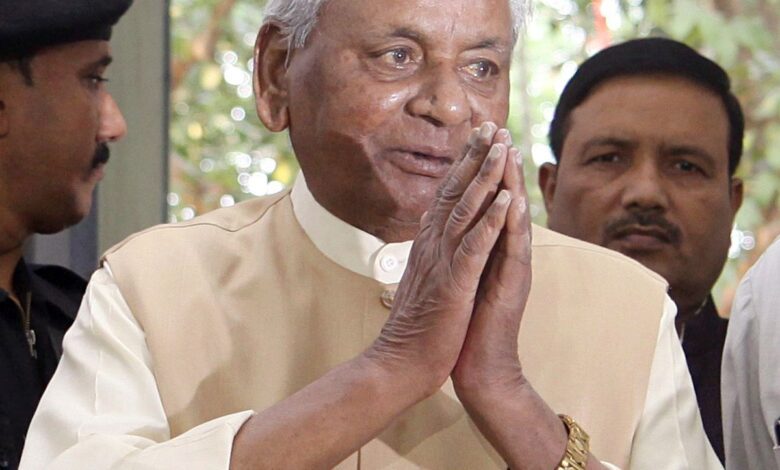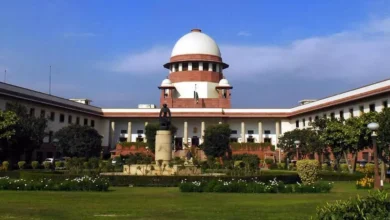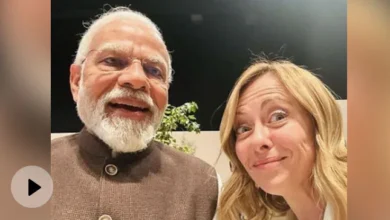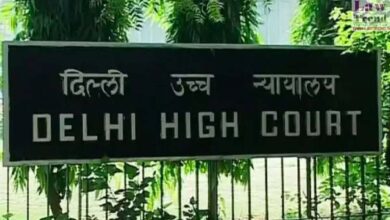Kalyan Singh: The Chief Minister’s Sacrifice for Ram Temple and Humanity
The then Chief Minister Kalyan Singh played an important role in the Babri Masjid demolition in 1992, leaving an indelible mark on the socio-political landscape of India

In a poignant chapter of Indian political history, the late Kalyan Singh, the then Chief Minister of Uttar Pradesh during the pivotal Ayodhya movement in the early ’90s, demonstrated an unparalleled commitment to his ideals, leaving a lasting imprint on the nation. His dedication to the cause of building the Ram Temple in Ayodhya set him apart, as he made a sacrifice that transcended the typical maneuvers of politicians clinging to power.
Kalyan Singh’s unique approach to politics became evident when, foreseeing a limited tenure, he initiated preparations to relinquish his Chief Ministerial post four years ahead of schedule. His singular focus was the construction of the Ram Temple, a cause that would define his legacy as a champion of Hindutva.
In November 1992, political observer Makhan Lal Fotedar noted an intriguing development in Lucknow. He observed the swift renovation of a house near the residence of N D Tiwari, then Uttar Pradesh Chief Minister. Upon inquiry, it was revealed that this house belonged to Kalyan Singh. Fotedar, curious about the early renovation, questioned the timing, given that Kalyan Singh had several years left in office. The conclusion drawn was that Kalyan Singh had astutely realized the uncertainty of his tenure and was preparing to shift residences.
On November 27, Fotedar brought this information to the attention of Prime Minister P V Narasimha Rao, expressing concern about the ongoing renovation at Kalyan Singh’s private residence. Unfortunately, Fotedar’s plea to protect the Babri disputed structure, deemed a part of history, seemingly went unheard.
The fateful day of December 6, 1992, saw the demolition of the Babri structure, and true to his foresight, Kalyan Singh tendered his resignation as Chief Minister. Despite having four years left in his term, he had dedicated his first year to the cause of the Ram Temple. Kalyan Singh’s pivotal role in the acquisition of 2.77 acres of land for the temple and his unwavering commitment marked a defining era in the Ayodhya movement.
As Chief Minister Yogi Adityanath reflects on Kalyan Singh’s legacy, he emphasizes the late leader’s willingness to prioritize serving Lord Ram over the comfort of the chief minister’s chair. Adityanath describes this sacrifice as a testament to Kalyan Singh’s deep commitment to his ideals. Union Home Minister Amit Shah pays homage to Kalyan Singh, acknowledging his emphasis on three key goals: expediting the Shri Ram Janmabhoomi movement, addressing the welfare of the poor, and advancing the well-being of the backward society while maintaining social harmony.
Prime Minister Narendra Modi, continuing Kalyan Singh’s work, is lauded for his dedication to the ideals set forth by “Babuji.” Shah recounts Modi’s first interaction with Kalyan Singh during the 2014 Lok Sabha elections when Modi, then in charge of Uttar Pradesh, received detailed guidance from Kalyan Singh, breaking records in the state. Amit Shah pays tribute on behalf of the nation’s workers, recognizing Kalyan Singh’s profound impact on Indian politics.
Kalyan Singh’s sacrifice and commitment to the Ram Temple cause transcend the typical narratives of political maneuvering. His legacy lives on in the monumental task he set in motion, leaving an indelible mark on the socio-political landscape of India.
You might also be interested in –Historic Ayodhya Event: PM Modi to inaugurate Ram Temple, grand consecration on January 22



